Full Moon Over Haiti and Chile
By Dady Chery
Haiti Chery
“The earth had never trembled here, in this soft point of land that leans forward toward the sea: the city is built on spongy soil, that of the coral plain; the region had never known volcanoes nor vents, nor columns of smoke, nor geysers, nor solfataras….”
Jose Marti, from the essay
The Earthquake at Charleston
The Nation
September 10, 1886
CHART
|
|
|
| Magnitude | 7.0 | 8.8 |
| Date/Time | Tuesday 12 January 2010 at 04:53:10 PM at epicenter | Saturday, 27 February 2010 at 03:34:14 AM at epicenter |
| Location | 18.457°N, 72.533°W at epicenter | 35.846°S, 72.719°W at epicente |
| Depth | 13 km (8.1 miles) | 35 km (21.7 miles) |
| Region | HAITI | OFFSHORE, CHILE |
| Intensities and towns |
Violent* at Leogane with Tsunami waves, pop. 134,000 very near (18° 30′ 39N, 72° 38′ 2W) to epicenter | Severe at Talcahuano with Tsunami waves, pop. 253,000 |
| Violent at Carrefour, pop. 442,000 | Very Strong at Concepcion with Tsunami waves, pop. 700,000. 115 km (70 miles) from epicenter | |
| Violent at Gressier, pop. 26,000 | Very Strong at Chillan, pop. 170,000. 100 km (60 miles) from epicenter | |
| Severe at Port-au-Prince, pop. 1.9 million. 25 km (15 miles) from epicenter | Very Strong at Talca, pop. 197,000. 105 km (65 miles) from epicenter | |
| Severe at Miragoane, population 89,000 | Very Strong at Santiago, pop. 4.8 million. 325 km (200 miles) from epicenter | |
| Population | 7 to 9 million | 16.8 million |
| Most recent earthquake |
|
|
| *Scale of intensity is from: Not Felt, to Weak, Light, Moderate, Strong, Very Strong, Severe, Violent, and Extreme. |
A remarkable aspect of the recent Haitian and Chilean earthquakes was the swift mobilization of military force to protect property instead of persons. In some long-ago world, maybe one of my imaginings, the well-muscled men in camouflage would have extended a hand instead of a gun. Watchers of New Orleans, Haiti, and Chile might well suspect that they are merely one disaster away from the full violence of their states.
Perhaps the fear of these thoughts has transformed genuine expressions of empathy to academic discussions of the perceived contrasts between Haiti and Chile. Citizens of both countries are suffering, not from a lack of infrastructure but an abundance of bad luck.
In Haiti, the earthquake happened before five in the afternoon while many schools, businesses, and government buildings were populated. The highest concentrations of casualties occurred under such structures. The epicenter of the Haitian quake coincided with the sizeable city of Leogane and was only a short hop (15 miles) from the capital city of Port-au-Prince. The earthquake in Haiti happened inland and was quite shallow.
The one in Chile occurred at sea and was nearly three times deeper, but it generated enough force to accelerate the earth’s rotation permanently by one millionth of a second. About one half of the Haitian population suffered earthquake intensities that were Violent to Severe, with the collapse of many buildings. The Chilean victims, who were farther from the epicenter of their earthquake, endured intensities that were Severe to Very Strong, but these were accompanied by waves of murderous tsunamis.
One might say that Chileans were prepared, but how could anyone be ready for a disaster at 3:30 in the morning? Haitians were wholly unprepared.
Port-au-Prince was shaken by its last earthquake over 200 years ago: horse and buggy days, when the population was low and the city boasted only a handful of buildings.
This recent plate slippage and energy release happened along the Enriquillo-Plantain Garden Fault, which crosses the island’s southern peninsula from east to west and continues across Jamaica, through the Carribbean sea.
According to the Havana-based Haitian geologist Patrick Charles, who warned Haiti in September 2008 that a 7.2-magnitude earthquake was imminent, the Enriquillo-Plantain Garden Fault is reknowned for staying quiescent for decades to centuries while it builds up pressure for its next trembler, usually elsewhere along its length.
Haitian politicians would have us believe that Port-au-Prince needs to build better palaces and strengthen its building code in preparation for the next earthquake. Supposing for a moment that this would work for Port-au-Prince, then why not apply it to every city in the southern peninsula? Why not adopt a similar code in Jamaica? Such a scheme would price every new house out of the reach of nearly all these countries’ people except the outrageously rich. What Haiti needs are small, sensible buildings that its citizens can afford. Perhaps even ones that will collapse safely outward during a quake. The earth will go on reconfiguring itself, indifferent to us. While we cannnot hope to resist its forces, we can clear the rubble and rebuild our cities with intelligence and fairness.
To the land of the poets, my deepest sympathies. To you, my dear reader, I pose this question. Should the storm of your life sweep away the house, job, billfolds, books, files, computers, and televisions, what tales would you tell under the full moon?
References
Magnitude 7.0 Haiti Region
Magnitude 8.8 Offshore Maule, Chile
Pager M 7.0 – Hait Region
Pager M 8.8 – Offshore Maule, Chile
Wikipedia (Earthquakes in Chile)
Sources: Haiti Chery | Oil painting “Full Moon over Pilot Hill”, by Jocelyn Aaudette | Chart constructed by Dady Chery with data drawn from sources including USGS, assorted maps, and population listings.
Source: Haiti Chery


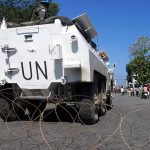

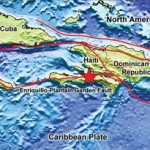
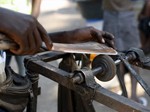
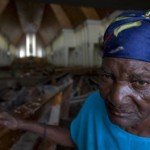
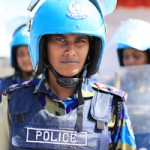
Comments
Full Moon Over Haiti and Chile — No Comments